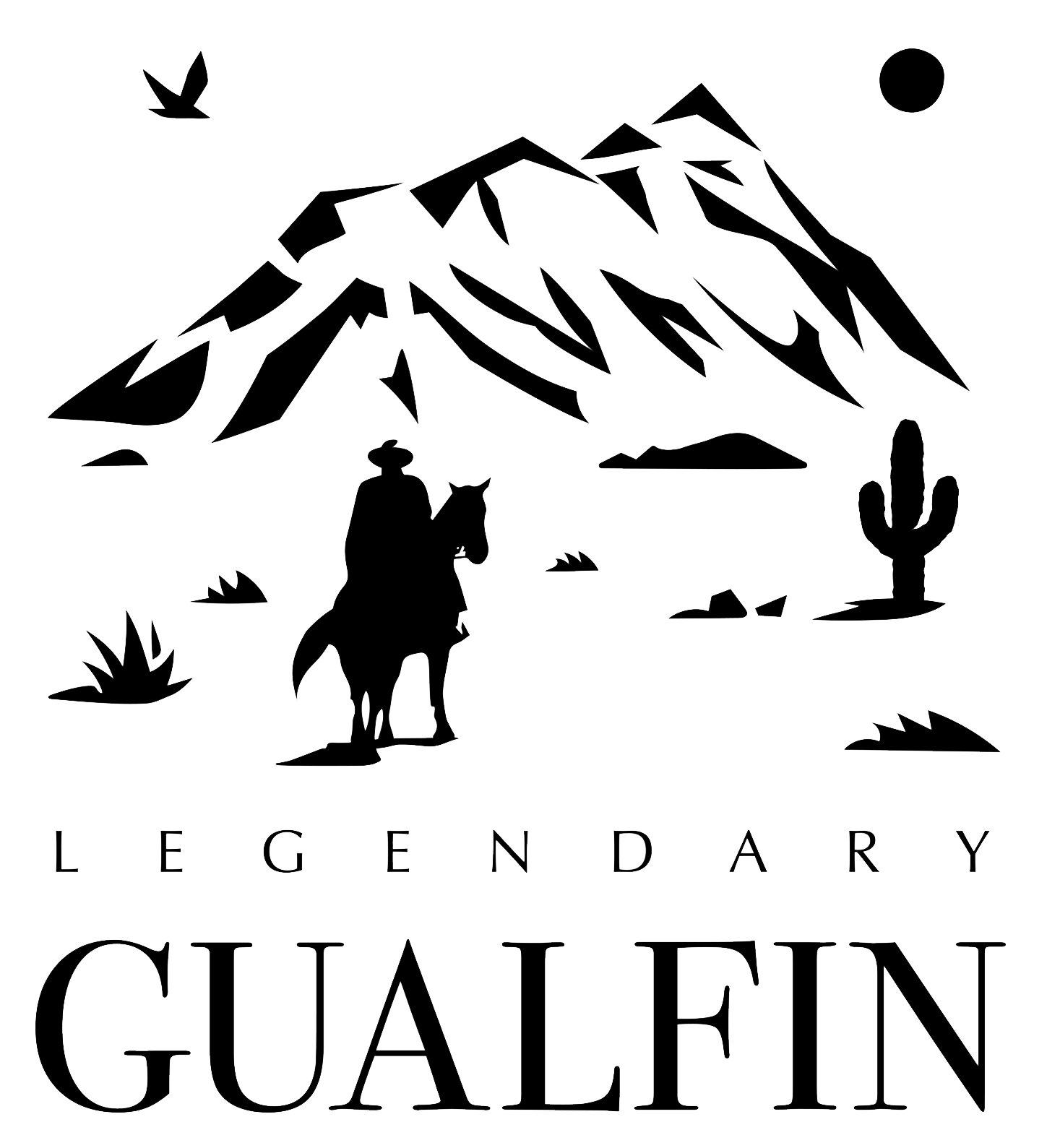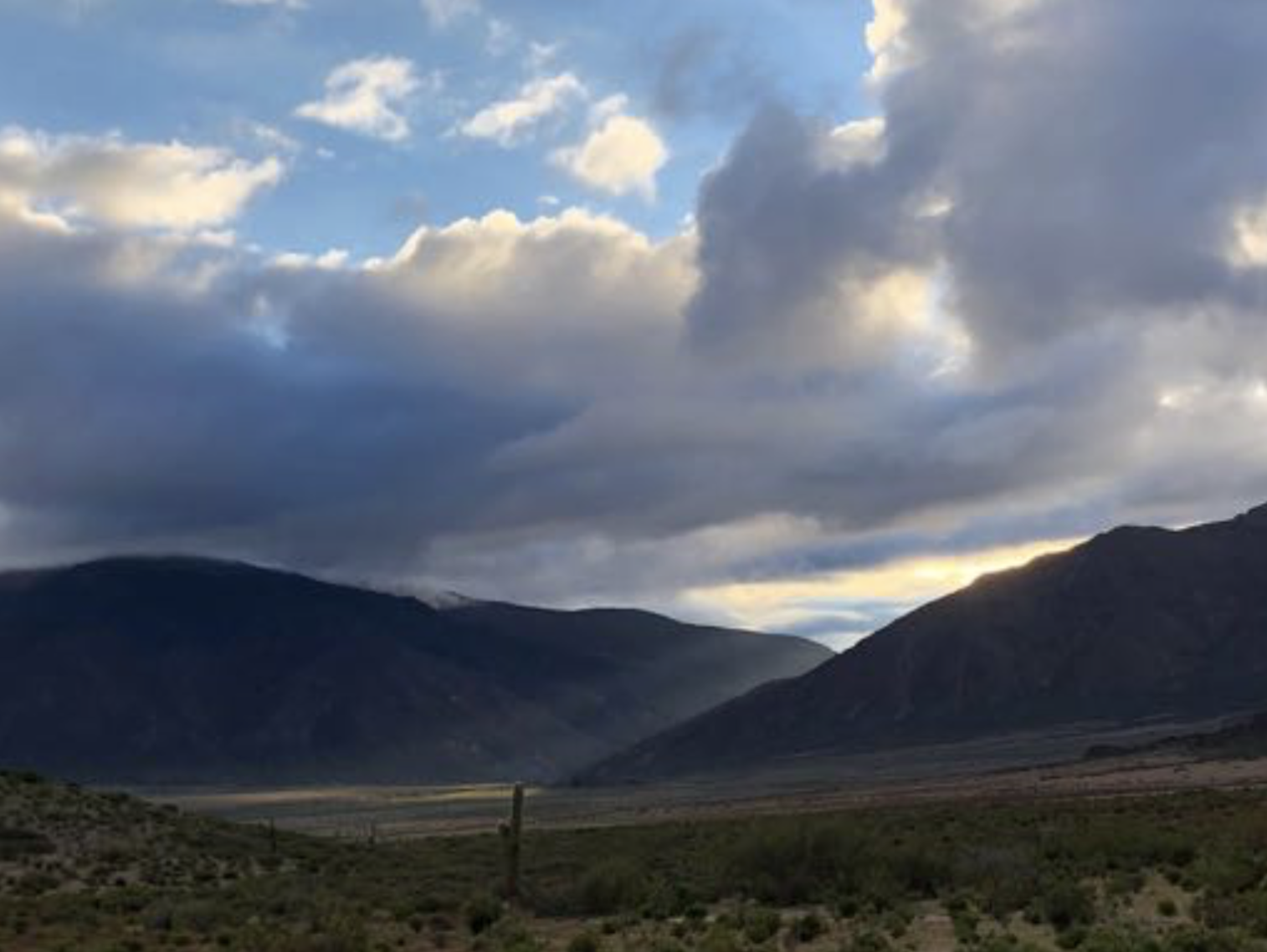The Thoroughfare into Gualfin
The trip from Molinos to Gualfin was short, dusty and familiar. Except for the electric lines. These now run up the valley from Molinos to the fincas of Colomé and Amaicha. They cut across the road to Gualfin, disappearing into the mountain-shielded vineyards and fields of finca Taquil.
With public electricity, wine-making in these mountain bodegas will now be more economical. Before, fuel had to be driven up from the city to power grape sorters, crushers, and fermentation vats. We wondered, though, how it could make economic sense for the power company to run lines all the way up the valley. Especially when the houses of the gente already are set up for solar-generated electric power.
“The governor wants to stimulate wine tourism in Salta province,” explained one of our friends. “You know, his brother is building a big bodega in Cafayate.” Public funds diverted to private gain is bad enough, but we shudder at the thought of arrenderos and pasteras binge-watching telenovelas. Corruption comes in many guises.
But if man must restlessly seek novelty, the essential topography of the valley seems eternal and unchanging. Ahead, the battleship rises from its frozen sea of red rock. Wind has formed it from the low cliffs along the edges of a wide arroyo.
This is the thoroughfare into Gualfin.
Looking West into the mountains from the plain of Gualfin
The plain opens up before us, lined with mountains on either side. In the folds of the mountains to the west, where water collects and grass grows in tiny vales and on small pampa, the cattle of the gente shelter and feed. It’s a natural method of cattle-raising, along rigorously Darwinian principles. A herd might comprise 20 or 30 animals, small, sinewy, and horned. These are survivors. Condor watch from the craggy heights, waiting to descend upon a straying calf, and ready to beat off its mother with powerful bony wings and tearing beak. And there is no rest for the bovine; puma hunt at night.
Once or twice a year, man chases these cattle on foot, driving them with stones and lassoes into corrals. It is an anachronistic method of ranching, but a source of general amusement and family gathering. Relatives come from as far as Salta city to partake in the annual round-up. Calves are branded and castrated. In theory, at least, all the cattle are vaccinated. A few are eaten around the campfire, some are taken home for the family larder, and some are brought down for sale in local markets.
Guanaco pasture on tender grasses and tough monte
Taller and more desolate mountains rise on the east. Here guanaco, wild cousins of the llama, roam. Condors nest. We pass the Huasa Pampa, through which the finca’s cattle once trekked to the markets of Molinos. Next is the narrow quebracha of Waipo. Then, the mountain known as El Durazno, the peach. It has a cleft at the top, where the stem of a figurative peach would be. Though, some say, it is named for a solitary peach tree that once grew from its barren sides. Next to it is a La Angosta, the “narrow” place between mountains. Those on its other side are the reddish Colorados.
Our herds pasture on the plain. There is plenty to eat after the rains and no time to lose. The desert grasses spring to life and go to seed almost at once. What the cattle cannot eat now is lost to ants, birds, mice, and the dry winter wind.
Pampa grass in the cienaga of Gualfin
Ahead of us is the mountain Rebenque, the “whip.” At its foot, as yet invisible, is our house, the sala. Back when the only way in and out of Gualfin was on the back of a horse and town was a couple of days ride away, the sala was where flour, sugar and other necessities were traded for meat, hides, hand-braided reins, bridles and lassoes, and hand-woven ropes, saddle pads, bags and ponchos.
But we are in our new truck and in less than an hour, we look down at the tops of the tall green alamo trees on the far side of the río Gualfin. Streams of sparkling water course through the grey sand, reflecting the dense blue of the sky. Up a rain-steepened bank on the opposite side, and we are at the gate to finca Gualfin. We pass the cienega, the marsh, with stands of pampa grass and yellow-flowering bizcol. This is low-lying, sheltered winter pasture, reserved for the hard months of drought, wind and cold.
Looking through La Angosta at eventide
On the opposite side of the road is the old sheep corral made of tightly fitted stones. On the steep slopes above, white particles move among the rocks and sparse greenery; Firmina’s goats are slowly coming home as the sun begins to set. We cross the bed of the río Barranca, the last obstacle before the outer gates of the sala. A little water trickles through on the surface before the river descends underground. It emerges in full vigor on the edge of the plain and then disappears through La Angosta to the neighboring finca of Pucará.
Looking out to the eastern mountains from the sala of Gualfin
In the dry season, when all is dust and the cattle are gaunt, we covet the water of our neighbor. We would like to dam it up. But if water is not specifically mentioned in the Ten Commandments, this
is contrary to the ancient laws of water distribution in the Calchaquíes. Each must have his torno, or “turn.”
And now, with purple-seeded alfalfa and green pasto llorón burgeoning in the fields around the sala, with water rushing through the acequia, spilling into the road, and splashing up around the tires of the truck, we are right-minded. There is water for all! As if in recompense, a gentle drizzle starts to spatter our dusty windshield. We enter the green allée of alamo trees, pulling up at last under the white stones that trace an eagle over the doorway to the sala.
-Elizabeth





